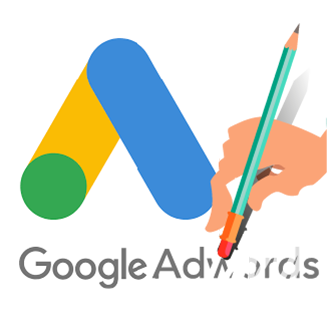When it comes to Adwords, it can be very challenging to put together a campaign that can achieve success.
Even the some of the marketers that have been using Adwords for years tend to get mired in the same mistakes time and time again.
For example, you could be using Adwords to drive traffic to your business blog, but you can’t see any noticeable results because you have been sending readers to the wrong articles.
And to make things even more painful, running an Adwords campaign requires spending money, and when things don’t work out, you’ll end up with a hole in your wallet with nothing to show for.
And that’s why it’s important to understand the “dos” and “don’ts” of AdWords before dropping money into your campaign.
Not bidding on your own brand
If you’re looking to make a bid for your AdWords campaigns, make sure you’re bidding on your personal brand.
While this seems like a waste of money, you’ll want to prevent your competitors from bidding on your brand.
Other companies will want to use your brand name for their own ad groups and try to pull your target clients away from your business.
This is especially true when you have done your SEO successfully and have established yourself as a leader in your niche or industry.
So in order to stop competitors from stealing them from under your nose, you need to bid on your own brands before they do.
Most big companies do this to protect themselves. After all, if a user is searching specifically for your brand or company, it is an indication of a ready buyer as they are already considering your product or service.
It will be a waste to let these hot leads go to your competitors if you don’t capitalise on your own brand.
The last thing you want is for these ready buyers to end up on your competitor’s site when they’re about to hand you their money.
Mistake 1. Not utilising Single Keyword Ad Groups (SKAGs)
It’s no surprise that everybody wants a spot at the top of Google’s search results. After all, the top three paid ad spots for each keyword commands nearly 50% of the total clicks on that page.
But getting to the top means knowing how to use the right method to target the right keywords.
For example, a keyword such as “home loans” is highly sought after by loan businesses. However, this means it is also highly expensive just to get a single click. With prices this high, you will burn through your ad budget in days.
It’s highly likely you’re not going to rank for this kind of expensive keywords. So instead, you should come up with creating ad groups that are highly relevant to those expensive keywords and still grab some of the attention.
But don’t expect to rank number 1 just because you’ve lumped all the popular keywords into a single group.
For example, you don’t want just to group together 10 or more loosely-themed keywords. For instance, if you are ranking for the word “shoes,” you shouldn’t populate your list with:
- Red high heeled shoes
- Blue flat shoes
- Black high heeled shoes
- Green flat shoes
When you build your groups this way, you will create a situation when your ad says ‘green flat shoes,’ but it will show up in a ‘blue flat shoes’ search result, creating inconsistency and dissonance.
What you should do instead is pick out the highest performing keywords, then find ways to organise them differently. Let’s say ‘red high heeled shoes’ are the top keywords, so you should build your group in this way:
- [Red high heeled shoes]
- “Red high heeled shoes”
- +red +high +heeled +shoes
As you can see, this ad group focuses on just one keyword term. Therefore it’s called the “single keyword ad group.” Or SKAG.
Using SKAG can often result in more accurate ads, better cost per clicks rate, and lower cost per conversion rate. These factors will improve your relevance score and help you stand a higher chance of ranking your ads.
In essence, better ad relevance leads to a higher click-through rate (CTR). That leads to better quality scores. And if all goes well, you can expect lower costs.
Once you’ve placed your keywords properly into groups, you can then create your ads for that group that includes the exact keywords you wish to rank for.
Here’s the basic formula for writing your ads based on your SKAGs:
Headline 1: Include your keyword
Headline 2: State your features and benefits
Description: Elaborate on the features and benefits, and include your CTA
Display URL: Ensure your URL contains your keywords as well
The keyword in the “blue socks” example is included in both the headline and the display URL. Then everything else revolves around it.
By rearranging your Adwords campaign this way, you make the life of the Google end-user better.
The user ends up getting better results. The ads they see becomes more relevant to what they are looking for. So putting the extra work to optimise your campaign will be worth the effort.
Mistake 2. Not using negative keywords
In a nutshell, negative keywords are keywords that don’t make sense to your target audience, or they do not bring in leads for your business.
Negative keywords are often overlooked by most marketers. With negative keywords, you can have control over what search terms you are paying to show your ads.
This means you can save money by preventing your ads from showing up on irrelevant keywords. In addition, having the right negative keywords can ensure you reach the right Google audience.
On the AdWords, negative keywords are indicated with a “minus” sign. Adwords will not show your ads on search results containing these keywords.
For example, if let’s say you operate a Japanese language school for pre-schoolers, your ads may end up showing in search results for adult Japanese language schools.
Since adults aren’t the target for your business, you will want to include the word “adult” as your negative keyword.
You can run negative keywords in both the ad-group level and campaign level, making it a highly flexible and invaluable feature for your Adwords campaign.
Fortunately, if you are unfamiliar with negative keywords, Google will help you with the process step by step.
Mistake 3. Sending people to the wrong landing page
Ensuring your ad copy lines up perfectly with your targeted keyword is only the first part of the Adwords puzzle.
However, having your ad links to the right landing page actually plays the most significant role in driving your conversions.
Having your highly optimised homepage reach the top position, but then to link the ads to a generic home page will ultimately kill your conversions.
It’s like having a perfectly tailored three-piece tuxedo, but realising you forgot to buy a pair of matching shoes.
For example, if you want to get people to sign up for a free consultation, you can’t just have your ad link to your homepage that has no CTA, such as a ‘get a free quote’ or ‘contact us’ button.
And you have to ensure that your CTA is attention-grabbing and easily discernible from the rest of the page.
That means if your homepage doesn’t feature these prominent CTAs, you have to create a brand new landing page dedicated just for the ad.
This would allow you to create a highly optimised page that can further increase your rate of conversion.
When you have the right CTA and design at the end of the ad link, you line your conversion perfectly with the message in your ad.
Mistake 4: Not tracking your conversions properly
Whenever you run any campaigns on Adwords, you need to be monitoring the right metrics. This will allow you to make the smart decisions necessary to improve your campaign and increase your conversions even further.
Let’s say you are starting a campaign with a goal of increasing the number of signups on your website. Shortly after you’ve launched your campaign, you’ve seen a spike in traffic under Google Analytics.
Does this mean that your ad campaign is working well? Not necessary.
To find out, you have to set your tracking goals in Google Analytics as well to help you track metrics such as the number of conversions coming from specific pages.
This will allow you to tell whether your PPC campaigns are working, or at which point of your conversion funnel the users are dropping off.
To set up your conversion tracking, go to “Admin,” then “Account,” followed by “Property,” and then click on “View.”
Inside the view column, you should see a button that says “ Add New Goal” which will lead you here to a page where you can set your name and then define your goal type.
These are some of the choices you can choose to set as your goal type:
- Destination – HTML pages such as ‘thank you’ pages and confirmation screens that show up after landing page downloads or email
- Events – e.g., based on user interactions such as when a user watches a video, signs up for a newsletter, clicks on an ad or your site or leaves a comment on your blog.
- Pages/Screens – the number of pages viewed within a session, e.g., you can set the minimum number to 2 pages.
- Duration – the minimum length of time you would like visitors to spend on your website before it’s deemed as a goal completion.
While goal setting and tracking seems like it’s pretty straightforward, there have been many times where this has been done incorrectly.
Even the location where you’ve installed the tracking code could lead to highly inaccurate readings. While you can still track the number of visits, you won’t be able to track the exact conversion numbers.
And without these figures, you will have no clue how your ad budget is performing. This is as good as flying blind when you run your campaign.
Only when you implement your conversion tracking correctly, then you’ll be able to tell your money is getting you the leads you need for your business, and make the right decisions whether to spend more money or pull the plug.
Mistake 5: Not understanding your users’ intent
What do you think your user is looking for when they are searching for your targeted keywords?
It’s crucial that you figure out what is your users’ intent when they are running keyword searches on Google.
When you start bidding for keywords blindly without understanding any of the intentions, your ads will begin to lose its effect because it will make little sense to the user.
For example, if a user searches for “Macbook screen repair” and because you are bidding on the word ‘MacBook,’ your ad on “Accounting software for MacOS” will show up for this user.
This will make your ad highly irrelevant to the user and affect your conversion rate.
To know what your users’ intent is, you need to first understand that there are three types of user intent:
Navigational: When the user is trying to reach a specific site
Informational: When the user is trying to find more information about a particular topic
Transactional: When the user is prepared to buy and is looking for the store page to hit ‘Buy Now.’
Going back to the ‘Macbook screen repair’ example, if a user is looking for ‘how to change my MacBook screen,’ chances are he will get an ad about ‘Apple computer repair shops near me.’
While he did not search for “where to change MacBook screen,” the ad is still relevant to him. As it’s highly likely that he won’t be changing the screen on his own.
So whenever you are choosing keywords, you should focus on the intent.
Only by understanding your audience before finalising your groups, you can ensure your ad shows up at the relevant keyword search results.
Don’t just start picking keywords that are popular or cheap, because they may not be a good fit for your users’ intent.
Because at the end of the day, you want conversions, not clicks or view. Only by aligning your campaigns with a searcher’s intent can you get the conversions that you seek.
Final words
While there are indeed plenty more AdWords campaign mistakes we can cover, these are some of the most crucial ones to avoid as they can kill your ad budget quickly.
When there is real money on the line with Adwords, you need to make sure every pound you are spending is going to bring in the highest amount of returns.
It’s not easy to fully understand all the intricate inner workings of Adwords, but it’s also usually the finer details that can make or break a campaign.
Mistakes such as not linking your ads to the right landing pages or not grouping the right keywords and ads together can make a difference between a failing or successful campaign.
When it comes to digital marketing, it’s often a numbers game.
Even insignificant tweaks that can bring in a little extra percentage of conversion can reap huge benefits, especially when you’re starting to reach thousands in your audience in a single day.







